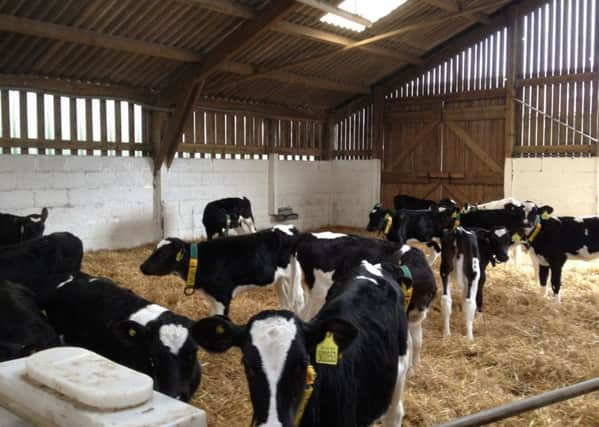How can NI dairy farmers use genomics to breed a better herd?


How can dairy farmers predict the potential of their animals?
One way is through genetics, the inherited building blocks that influence the production, type, health and fitness characteristics of the animal. Good genetics are fundamental when considering the profitability of any dairy farm.
Advertisement
Advertisement
A structured approach to breeding can be a highly cost effective way of improving herd performance and any genetic improvement that is made is permanent and cumulative over generations.
Traditionally parent average figures have been used to estimate the genetic merit of future replacements. Parent average is exactly that – an average of the parents estimated genetic make-up with no ability to account for what genetic material was actually inherited. As a result, the reliability of these figures are low (typically 15-35%) and they are subject to a high degree of change as the animal gets older.
Genetic evaluation is changing breeding
decisions
Genomic testing is revolutionising the way dairy producers make management, selection and breeding decisions on farm. Genomic test results are significantly more reliable than traditional parent average values (typically 50-70%) as they reveal more about the genetic potential an animal actually inherited from its parents.
Up until now the major focus of genomic testing has been the benefit in identifying high quality young bulls early. We can now use exactly the same power of prediction for female youngstock, as a cost-effective management tool available to dairy farmers. Using genomics, a lifetime of information is available from one test. Testing helps you identify the animals that have the correct credentials for a specific farm at an early age. Using genomic testing, genetic progress can be accelerated with confidence and herd profitability can be enhanced by capitalising on improved performance across a number of traits.
Advertisement
Advertisement
After all, genetics are the building blocks that influence the production, type, health and fitness characteristics of the animal.
Genetics serve as the foundation
Genetics are a long term investment. Any genetic improvement made is permanent and cumulative. Therefore decisions made today will impact multiple future generations.
However, genetics alone is not the whole answer. To complement focused-enhanced breeding it is essential good herd management is practiced in all areas of production, health, milk quality, fertility and feed efficiency. The combination of genetics and excellent management will yield the best results.
With so many factors relating to herd health to consider, a vet is well placed to advise farmers on how to maximise the herd’s genetic potential. CLARIFIDE® is a new UK veterinary-led genomics package that aligns genomic testing with the farm’s breeding objectives and herd health goals.
Advertisement
Advertisement
CLARIFIDE® delivers reliable predictions on a comprehensive suite of UK/ US core production, type and health traits, key production indexes and parentage confirmation to accurately predict genetic merit. Additionally, information on inbreeding, genetic conditions, and haplotypes help to arm producers with the necessary information to make informed breeding decisions for their herd.
Which animals are
suitable for testing with CLARIFIDE®?
CLARIFIDE® can be used to attain genomic predictions for Holstein, Friesian, Jersey and Brown Swiss animals that are 87.5% pure-bred.
How can the genomic information be used on farm?
The results of the CLARIFIDE® test could provide farmers answers to questions such as;
l “Which animals do I keep, and which ones do I cull?”
l “Which bull should I breed this heifer or cow to?”
l “How many progeny do I want from this female breeding animal?”
Your CLARFIDE® vet can help you:
Advertisement
Advertisement
l Decide on the right number of replacements and selecting those heifers to keep based on reliable data, controlling the cost of rearing females with limited genetic potential
l Make strategic breeding decisions in conjunction with your breeding advisor using genomic data to identify bulls that complement existing strengths and address apparent weaknesses
l Select donor and recipient females in embryo transfer and IVF programmes, preferentially allocate sex-sorted semen to the best heifers and identify heifers with low genetic potential for breeding with beef semen reducing their long-term genetic footprint and creating value-added calves.